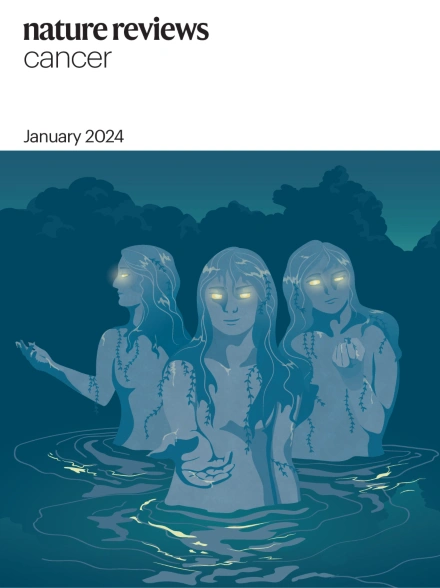Gender and sex interactions are intrinsic components of cancer phenotypes
IF 66.8
1区 医学
Q1 ONCOLOGY
引用次数: 0
Abstract
Sex is a significant determinant of cancer incidence and outcome. The effects of sexual differentiation on normal and cancer biology underly this epidemiology. The resultant sex differences in therapeutic target pathways and processes provide a foundation for developing more personalized cancer treatments. However, our efforts at personalization cannot stop there. Humans also have gender, and sex and gender are highly interactive in individuation. Thus, we will also need to consider how gender–sex interactions (GSI) affect cancer biology and clinical parameters such as the timing of diagnoses, clinical trial enrolment, and the completeness of efficacy and toxicity data. Ignoring the effects of GSI can compromise the quality of basic biological and clinical data and the conclusions drawn from them. This is not to say that GSI will always have a significant effect or any effect at all in every cancer study. Rather, it is to say that we know enough about GSI and human cancer to anticipate measurable differences when GSI are considered in research, enabling us to experimentally determine whether their effects are significant. Here, I delve deeply into GSI and cancer, as this approach to treatment personalization holds great promise to benefit all patients with cancer. In this Perspective, Joshua Rubin emphasizes the importance of gender–sex interaction (GSI) differences in cancer biology and clinical parameters to enhance precision medicine. He outlines the challenges and opportunities of integrating GSI effects into personalized oncology and argues that optimal outcomes require extending our current molecular approaches to include family history, life history and individual vulnerabilities in our diverse groups of patients with cancer.


性别和性别互动是癌症表型的内在组成部分
性别是癌症发病率和预后的重要决定因素。性别分化对正常和癌症生物学的影响是这种流行病学的基础。由此产生的治疗靶点途径和过程的性别差异为开发更个性化的癌症治疗提供了基础。然而,我们在个性化方面的努力不能止步于此。人类也有性别,而性别和性别在个性化中是高度互动的。因此,我们还需要考虑性别相互作用(GSI)如何影响癌症生物学和临床参数,如诊断时间、临床试验报名、疗效和毒性数据的完整性。忽视GSI的影响会损害基础生物学和临床数据的质量以及由此得出的结论。这并不是说GSI在每一个癌症研究中都会有显著的影响或任何影响。相反,这是说我们对GSI和人类癌症有足够的了解,可以在研究中考虑GSI时预测可测量的差异,使我们能够通过实验确定它们的影响是否显著。在这里,我深入研究了GSI和癌症,因为这种治疗个性化的方法有很大的希望使所有癌症患者受益。
本文章由计算机程序翻译,如有差异,请以英文原文为准。
求助全文
约1分钟内获得全文
求助全文
来源期刊

Nature Reviews Cancer
医学-肿瘤学
CiteScore
111.90
自引率
0.40%
发文量
97
审稿时长
6-12 weeks
期刊介绍:
Nature Reviews Cancer, a part of the Nature Reviews portfolio of journals, aims to be the premier source of reviews and commentaries for the scientific communities it serves. The correct abbreviation for abstracting and indexing purposes is Nat. Rev. Cancer. The international standard serial numbers (ISSN) for Nature Reviews Cancer are 1474-175X (print) and 1474-1768 (online). Unlike other journals, Nature Reviews Cancer does not have an external editorial board. Instead, all editorial decisions are made by a team of full-time professional editors who are PhD-level scientists. The journal publishes Research Highlights, Comments, Reviews, and Perspectives relevant to cancer researchers, ensuring that the articles reach the widest possible audience due to their broad scope.
 求助内容:
求助内容: 应助结果提醒方式:
应助结果提醒方式:


